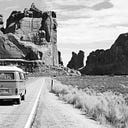How can HDR photography produce the best photographs?
HDR photography is a technique for shooting photographs with a wide dynamic range. There are several methods for taking HDR pictures. Exposure bracketing, Tone mapping, and RAW image capture are three techniques. Learn how to convert a single RAW file into an HDR image.
Exposure bracketing is a method that can assist photographers in taking better photographs, particularly in complex lighting settings. This method entails shooting three photos of similar composition with varying exposures. The first shot will be the “light meter exposure,” while the remaining two will be either underexposed or overexposed. Having several alternative orientations gives photographers more excellent editing choices.
Adjusting the camera’s shutter speed to generate numerous photographs with various exposures is how exposure bracketing is achieved. You can manually change the shutter speed or set a bracketing range. A tripod is suggested. The ISO and exposure compensation dials should also be adjusted to their lowest settings.
In Lightroom and Photoshop, there are three techniques to handle bracketed photographs. First, you may blend the pictures to make an HDR image, or you can open them separately and adjust the well-exposed areas of each shot independently. The second approach only applies when moving items like automobiles or trees are not present.
Tone mapping is a method for combining numerous pictures into a single one. The resulting image has HDR clarity and a broad spectrum of tones. This method allows you to recover information lost during a direct conversion. In addition, tone mapping is a good technique for capturing the whole spectrum of genres.
The procedure consists of combining many exposures into a single file. Typically, the direction with the darker exposure is utilized to capture shadow details, while the approach with the light exposure is used to catch highlight features. Therefore, tone mapping is not always the ideal solution for HDR photographs. Instead, alternative procedures, such as exposure mixing, can be utilized. These techniques are comparable to tone mapping but offer fewer possibilities for the final picture adjustment.
Tone mapping is possible using software like HDR Pro. You may make HDR photos with 32 bits per channel, for instance, using HDR Pro. Additionally, you may apply tone mapping in Lightroom using the Develop module.
High Dynamic Range (HDR) photography is an excellent method for achieving dramatic effects in images. This approach combines many photos and accentuates their distinctions by adjusting contrast, saturation, and colour grading. HDR images can be exported as JPEG or undergo additional post-production processing.
First, many exposures of the same scene must be captured. Along with a tripod, a remote shutter is helpful for this technique. It is advised that there be minimum movement between each frame for optimal results. When taking HDR images, a tripod and remote shutter release are required. It is also advantageous to avoid colliding with fast-moving objects. After taking the photographs, you may use HDR photo editing software to eliminate ghosting.
The HDR editing program may merge the bracketed images, providing a more excellent dynamic range in the final image. HDR photography is an excellent method for improving the quality of photographs shot in breathtaking locales.
Creating an HDR image from a RAW file is a straightforward valuable approach in various shooting settings. For example, it can be helpful when a tripod is unavailable, or the subject is moving swiftly. In addition, this technique removes the requirement for ghost removal and other picture processing.
You may produce an HDR image from many RAW files using the same method. However, it would help if you kept in mind that processing several RAW files will use more resources and take longer. On the other hand, using a single RAW file saves time and work while creating a stunning, dramatic image.
A succession of exposure bracket shots must be captured to create an HDR image from a RAW file. Then, each image’s most significant aspects are blended to create a new idea. This approach involves the use of a tripod. However, it should be noted that many of us do not possess one. In addition, it might be challenging to align the bracket photos and eliminate ghosting and blurring owing to contour overlap.
